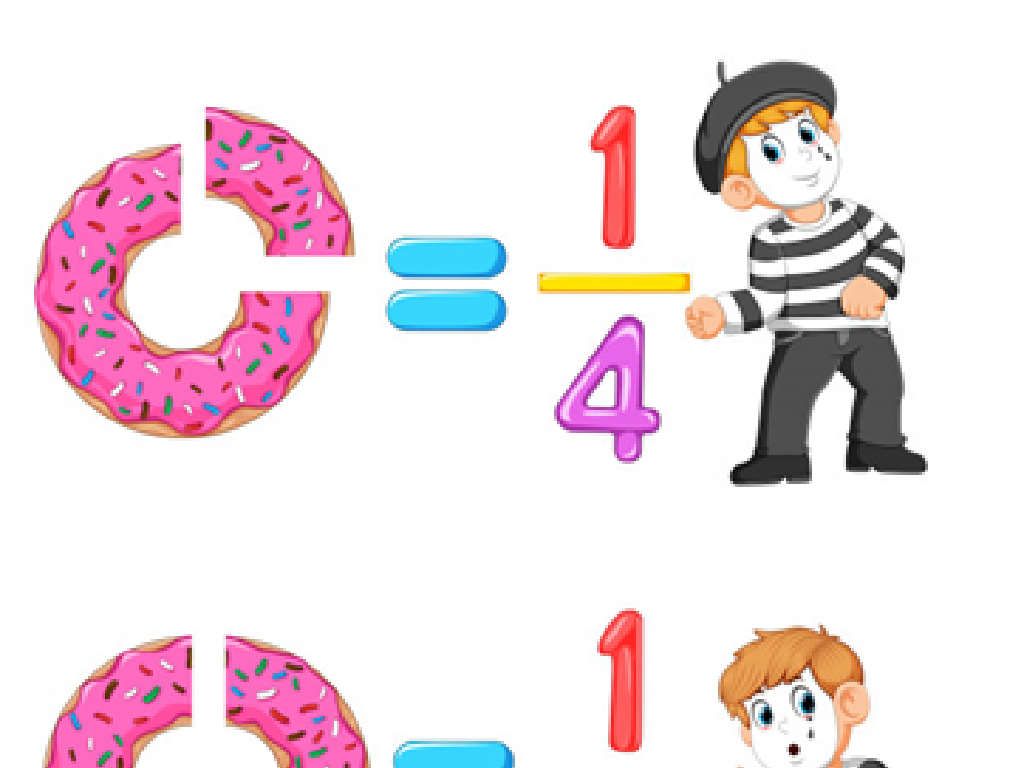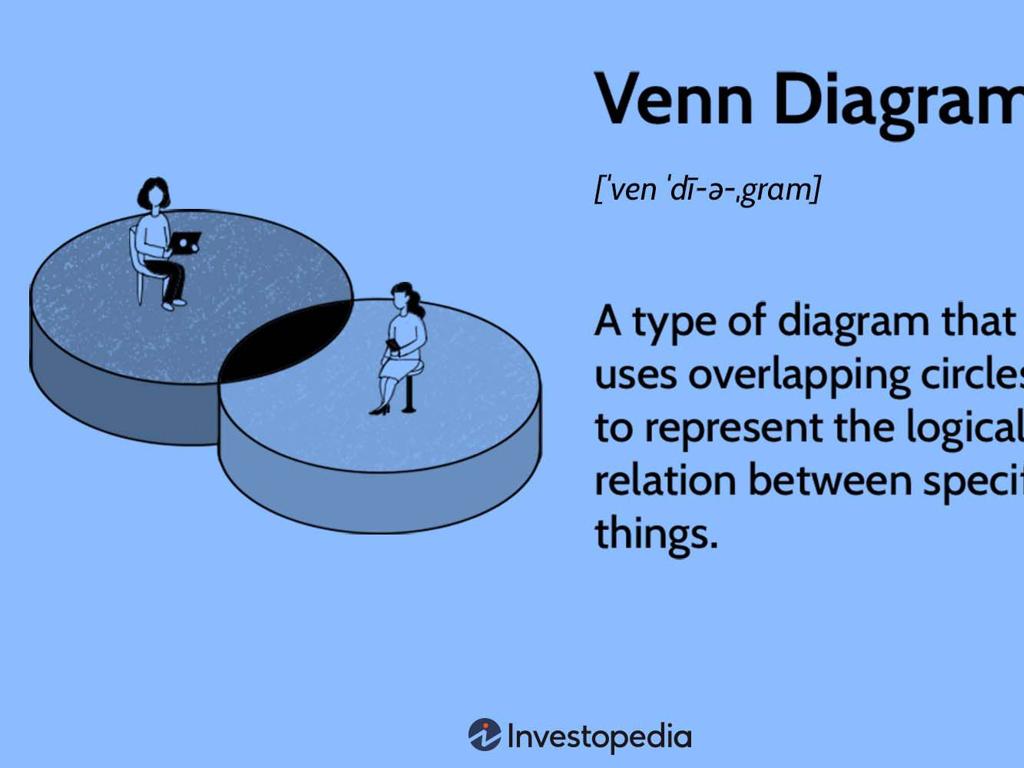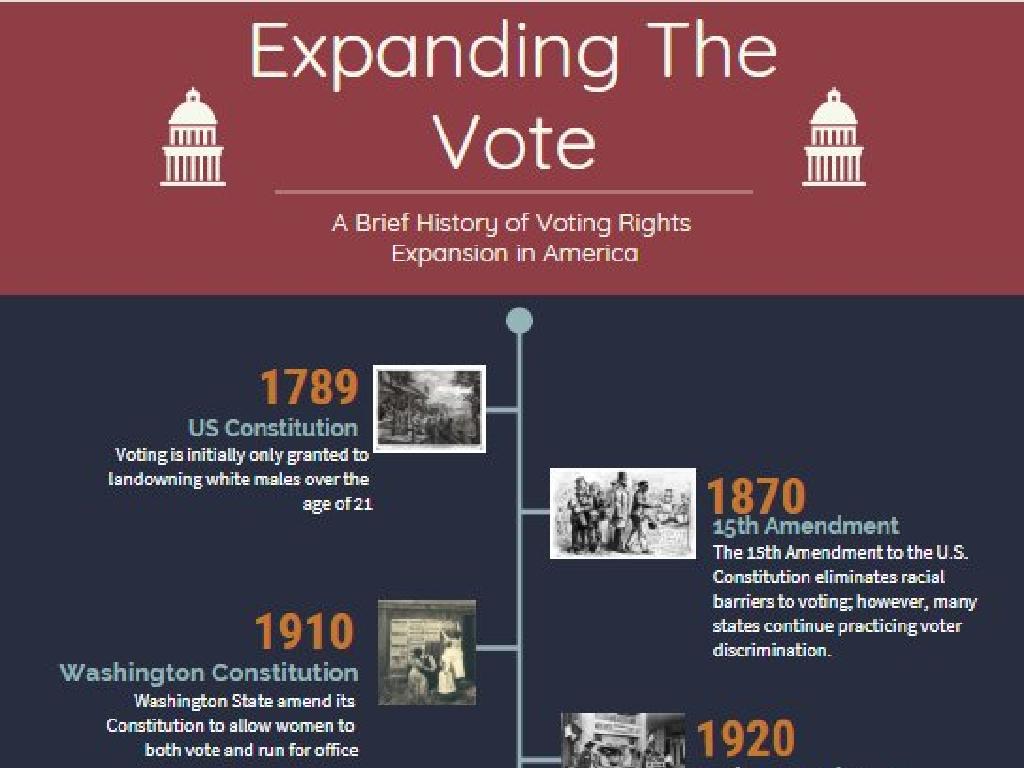Create Scatter Plots
Subject: Math
Grade: Eighth grade
Topic: Two-Variable Statistics
Please LOG IN to download the presentation. Access is available to registered users only.
View More Content
Understanding Scatter Plots
– Relationship between two variables
– Variables can be related, like height and shoe size.
– What is a scatter plot?
– A graph with points plotted to show a possible relationship between sets of data.
– Visualizing data with scatter plots
– Each point represents a pair of values, helping us see patterns.
– Scatter plots in statistics
|
This slide introduces the concept of scatter plots as a tool in two-variable statistics. Begin by explaining that in many cases, two variables can be related to each other, and it’s useful to understand this relationship. A scatter plot is a type of graph that is used to visualize data points for two variables; one variable is plotted along the x-axis and the other along the y-axis. Each point on the scatter plot represents an individual data point. This visual representation can help us quickly identify patterns, trends, or correlations within the data. Discuss how scatter plots are essential in various fields such as economics, biology, and social sciences to analyze the relationship between two variables.
Understanding Scatter Plots
– Scatter plot definition
– A type of graph for numerical data pairs
– Representing data pairs with dots
– Each dot shows one data pair on the X and Y axes
– Visualizing patterns and trends
– Look for clusters, lines, or spreads of dots
– Scatter plots in statistics
|
A scatter plot is a fundamental tool in statistics that allows us to visualize the relationship between two quantitative variables. Each dot on the scatter plot represents an individual data point, with its position determined by the values of the two variables. By examining the overall pattern of the dots, we can identify trends such as positive or negative correlations, or if there are any outliers that don’t follow the pattern. Scatter plots are particularly useful for spotting trends and starting to think about whether there might be a relationship between the variables being plotted. During the lesson, provide students with examples of scatter plots from real-life data, such as height versus weight, or test scores versus hours of study, to illustrate how these relationships can be visualized.
Parts of a Scatter Plot
– Horizontal axis (x-axis)
– Represents the independent variable
– Vertical axis (y-axis)
– Represents the dependent variable
– Plotting data points
– Each point represents a data pair
– Scales for axes
– Must be consistent and labeled
|
This slide introduces the fundamental components of a scatter plot, which is a type of graph used to display and compare two variables. The horizontal axis, or x-axis, typically represents the independent variable, while the vertical axis, or y-axis, represents the dependent variable. Data points are plotted on the graph where the x and y values intersect. It’s crucial for students to understand how to correctly plot these points and how to determine the appropriate scale for each axis to accurately represent the data. Emphasize the importance of labeling each axis with the correct units of measurement and choosing scales that make the data easy to read and interpret.
Creating a Scatter Plot
– Collect data with two variables
– Find a relationship between two different things, like height and shoe size.
– Choose scales for axes
– Make sure numbers on axes are evenly spaced and cover the range of your data.
– Plot values as points
– Each pair of numbers becomes a point on the graph. For example, (5,8).
– Analyze the scatter plot
– Look for patterns or trends in the data points.
|
This slide is designed to guide students through the process of creating a scatter plot, a type of graph that is used to visualize the relationship between two different variables. Start by collecting data that comes in pairs, such as the height and shoe size of students. Next, choose scales for the x and y axes that will allow all data points to be plotted accurately. Then, plot each pair of values as a point on the graph. Finally, analyze the scatter plot to identify any patterns or trends, which can indicate a relationship between the two variables. Encourage students to think critically about what the scatter plot reveals about the data.
Scatter Plots: Height vs. Shoe Size
– Collect classmate height and shoe size
– Measure in inches and shoe sizes respectively
– Plot data points on a scatter plot
– Each pair of height and shoe size is one point on the graph
– Look for patterns in the data
– Do taller people have larger shoe sizes?
– Discuss potential correlations
– Correlation does not imply causation; let’s explore!
|
This slide introduces students to the practical application of scatter plots by using relatable data such as height and shoe size. The activity involves collecting data from classmates, which encourages participation and makes the learning process interactive. When plotting the data, students will learn how to create and interpret scatter plots, a key skill in understanding two-variable statistics. The discussion on patterns and correlations will help students grasp the concept of correlation and its implications. It’s important to emphasize that while scatter plots can show a relationship between two variables, they do not necessarily prove that one causes the other. This activity will also serve as a foundation for understanding more complex statistical concepts in the future.
Interpreting Scatter Plots
– Positive correlation explained
– Both variables increase together
– Negative correlation explained
– One variable increases, the other decreases
– Understanding no correlation
– Variables don’t show any clear relationship
– Analyzing correlation in plots
|
This slide aims to help students understand the concept of correlation within scatter plots. A positive correlation means that as one variable increases, the other variable also increases, which can be visualized as a rising slope on a scatter plot. A negative correlation is observed when one variable increases and the other decreases, resulting in a falling slope on the plot. No correlation occurs when there is no discernible pattern or trend between the two variables, and the points on the scatter plot appear random. Encourage students to look for these patterns when they create and interpret scatter plots. Provide examples of each type of correlation for students to analyze and discuss.
Activity: Craft Your Own Scatter Plot
– Pair up and pick a topic
– Collect and record your data
– Create a scatter plot with your data
– Use graph paper or software to plot points
– Present your scatter plot to the class
– Explain your data trends and what they might mean
|
This class activity is designed to provide hands-on experience with scatter plots. Students should work in pairs to choose a topic that interests them, such as the relationship between study time and test scores, or daily temperature and ice cream sales. They will then collect relevant data, either from observations, surveys, or research. Once the data is collected, students will create a scatter plot, either manually using graph paper or with the aid of computer software. Encourage them to label their axes clearly and to plot each data point accurately. Finally, each pair will present their scatter plot to the class, explaining the data they collected, any noticeable trends in the scatter plot, and what those trends might suggest about the relationship between the two variables they chose to examine. Possible activities for different pairs could include comparing heights and shoe sizes, the number of hours spent on homework and grades, or the amount of rainfall and the number of umbrellas sold.
Class Activity: Scatter Plot Analysis
– Analyze given scatter plots in groups
– Discuss observed correlation type
– Is it positive, negative, or no correlation?
– Present group analysis to the class
– Reflect on the correlation’s implications
– How does the correlation affect the variables?
|
This activity is designed to foster collaborative learning and critical thinking as students work in groups to analyze scatter plots. Provide each group with different scatter plots and instruct them to determine the type of correlation (positive, negative, or none) by observing the data points’ direction. Encourage discussion within the groups to come to a consensus on the correlation type and prepare a brief presentation for the class. After presentations, guide a reflection on how the observed correlations might influence the relationship between the variables in real-world scenarios. Possible activities: 1) Comparing study time and test scores, 2) Analyzing age and height, 3) Looking at temperature and ice cream sales, 4) Examining hours of TV watched and grades. Each group could have a different dataset to keep the activity diverse.
Scatter Plots: Review & Homework
– Recap: What is a scatter plot?
– Key features of scatter plots
– Points on a graph showing the relationship between two variables
– Homework: Find a real-world scatter plot
– Look for scatter plots in news articles or studies
– Describe the observed correlation
– Is the correlation positive, negative, or none? Explain your reasoning
|
As we conclude, remember that scatter plots are graphs that show the relationship between two sets of data. Review the key components such as the x-axis, y-axis, data points, and the trend they suggest. For homework, students should find a scatter plot used in a real-world context, such as a news article or scientific study, and describe the type of correlation it shows. This exercise will help them apply what they’ve learned to real-life situations and understand the practical importance of interpreting data through scatter plots. Encourage students to explain whether the correlation is positive, negative, or nonexistent, and to consider what this implies about the relationship between the variables in their chosen example.






